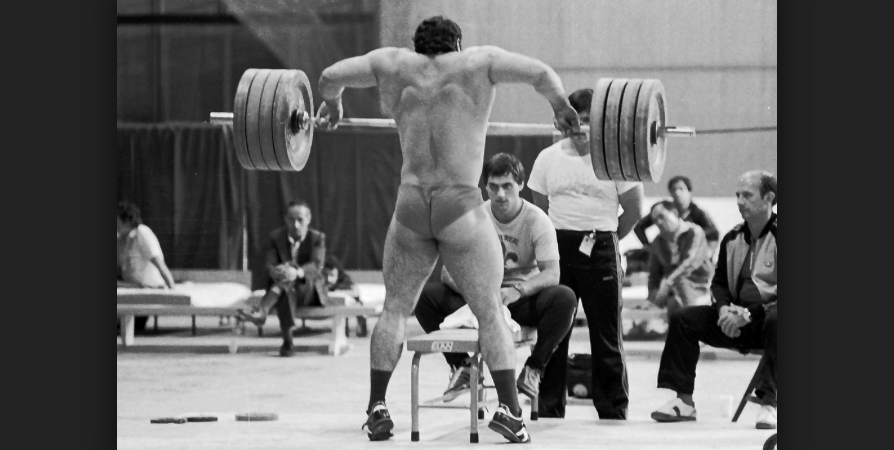In modern Olympic weightlifting, different training systems have developed due to geographic, cultural and certainly also due to state doping controls, with which a great deal of success has been achieved. The following three systems are best known:
Bulgarian system
Bulgarian athletes train eight to twelve times a day. In all, you only use six exercises: snatches, cleans & jerks, standing cleans, standing snatches, squats, and front squats—and nothing else. Maximum attempts are the order of the day.
Advantages of the Bulgarian training system:
1. Good technique training through frequent practice/repetition of competition exercises.
2. Development of high speed in repositioning (the area between maximum acceleration and deceleration of the barbell).
3. Excessive strength in the legs due to frequent squat training.
Disadvantages of the Bulgarian training system:
1. High risk of injury due to the constantly high load.
2. In relation to the muscles that are primarily trained, the athletes have suboptimal developed "secondary muscles" such as the rotator cuff, rhomboids, hamstrings, etc. This lack of muscular balance was one of the two main reasons why hardly any athletes claim more than an Olympic cycle could keep at the top of the world.
In summary, one can say that regeneration and general strength training are neglected. This system benefited from the fact that doping was still legal at the beginning of this era. This optimized regeneration was certainly one of the factors that made the great success of this system possible.
A very successful coach under the Bulgarian system was the recently deceased Ivan Abadjiev. Many athletes who have trained according to the Bulgarian system have had great success. Some of the most famous athletes are Naim Süleymanoglu, Antonio Krastev, Stefan Botev and Pyrros Dimas.
Russian system
The Russian system also trains several times a day. Compared to the Bulgarian system, the focus here is more on "assistance exercises" and "partial competition exercises". In the Russian system, deadlifts, bench presses and neck presses are also trained, which can be observed on YouTube videos by Dmitry Klokov or Dmitry Berestov, among others. One coach who has been very successful under the Russian system is Rudolf Pflugfelder, who has coached David Rigert, among others.
Many successful athletes have trained with the Russian system. Some of the best known are Dmitry Klokov, David Rigert and Vasily Ivanovich Alexeyev.
German system
In Germany, professionals usually train 8 units a week. As a rule, training takes place twice on Monday, Wednesday and Friday, once on Tuesday and Saturday and Thursday and Sunday are free or regenerative units are used (gymnastics, swimming, sauna, etc.)
It is trained after a block periodization. A period begins with general strength training and relatively high volume and ends with little general strength training, a lot of competition exercise or partial competition exercise, little volume and high intensity.
Relief weeks are always built into the training, this is usually taken into account every three weeks in the training plan. In the relief week, the total volume and total intensity is slightly reduced.
Successful Olympic medal winners who trained according to the German system include Mathias Steiner, Manfred Nerlinger, Marc Huster and Ronny Weller.
Besides Bulgaria, Russia and Germany there are also other big weightlifting nations such as China or Iran. Not every country uses only one system, but different systems. The systems are as different as the technologies. For example, Russian athletes generally start with more shoulder forward and therefore need a stronger back, so assistance exercises like deadlifts are more important in the Russian system than in other systems. Which technique works best for which athlete depends primarily on their anatomical requirements. There is no one perfect technique for all different anatomies.
If you are interested in learning how to lift weights in a way that suits your individual anatomy and how to integrate it into your training, learn the weightlifting exercises – snatch, clean & clean and jerk and their relatives step by step at the YPSI Weightlifting Workshop
For an article on the history of weightlifting, click here
Image: Russian weightlifter Anatoly Pisarenko in the top position of a snatch grip high pull. One of the greatest weightlifting photos of all time (Photo: Bruce Klemens)

